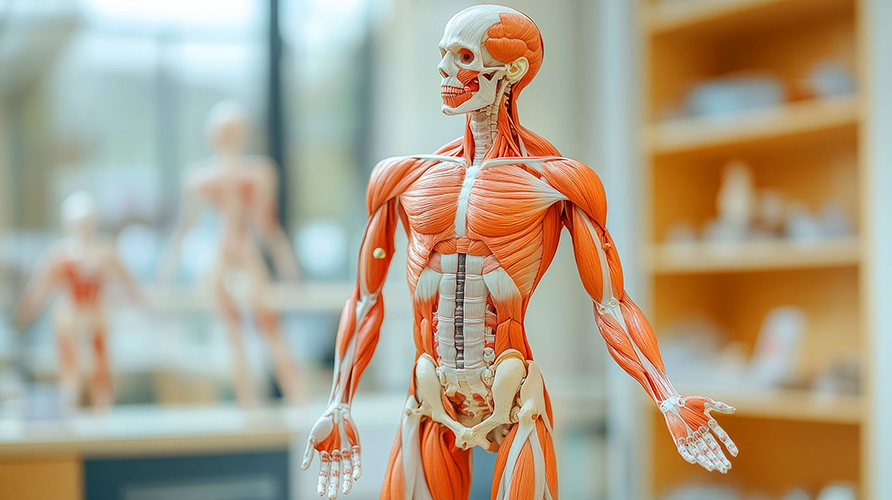
Musculoskeletal Pain

What Is Musculoskeletal Pain?
Musculoskeletal pain refers to discomfort or soreness in the muscles, bones, joints, ligaments, or tendons. This type of pain can be localized to a specific area or affect multiple regions of the body. It is a common condition that can result from injuries, overuse, or underlying medical conditions, ranging from mild aches to severe, chronic discomfort.
What Causes Musculoskeletal Pain?
Musculoskeletal pain can arise from a variety of causes, including:
- Injuries:
- Strains or sprains: Overstretching or tearing of muscles or ligaments.
- Fractures: Broken bones due to trauma or accidents.
- Tendon or ligament injuries: Such as rotator cuff tears or ACL injuries.
- Overuse or Repetitive Strain:
- Activities involving repetitive motions, like typing, lifting, or sports.
- Poor posture during work or exercise leading to muscle strain.
- Degenerative Conditions:
- Osteoarthritis: Wear-and-tear damage to joint cartilage.
- Degenerative disc disease: Spinal disc deterioration causing pain and stiffness.
- Inflammatory Conditions:
- Rheumatoid arthritis: An autoimmune condition causing joint inflammation.
- Fibromyalgia: A chronic condition characterized by widespread muscle pain and tenderness.
- Other Causes:
- Infections: Such as osteomyelitis (bone infection) or septic arthritis.
- Tumors: Rarely, bone or soft tissue tumors can cause pain.
- Nerve-related issues: Such as sciatica or peripheral neuropathy.
What Are the Symptoms of Musculoskeletal Pain?
The symptoms of musculoskeletal pain can vary depending on the cause. Common symptoms include:
- Aching, sharp, or shooting pain in the affected area.
- Stiffness or reduced range of motion in joints or muscles.
- Swelling, redness, or warmth in the affected area.
- Tenderness or sensitivity to touch.
- Muscle spasms or cramping.
- Weakness or fatigue in the muscles.
If musculoskeletal pain persists or worsens, or if it is accompanied by symptoms such as fever, unexplained weight loss, or numbness, medical evaluation is necessary.
How Is Musculoskeletal Pain Diagnosed?
A thorough diagnosis helps identify the underlying cause of musculoskeletal pain. The process may include:
- Medical history: Your healthcare provider will ask about your symptoms, activities, and any history of injuries or medical conditions.
- Physical examination: They’ll assess the affected area for tenderness, swelling, and range of motion.
- Imaging tests:
- X-rays to check for fractures or arthritis.
- MRIs or ultrasounds to evaluate soft tissues, such as muscles, tendons, and ligaments.
- Other tests:
- Blood tests to detect inflammation or autoimmune conditions.
- Nerve conduction studies for potential nerve involvement.
What Are the Treatment Options for Musculoskeletal Pain?
Treatment depends on the severity and cause of the pain. Common options include:
- Conservative Treatments:
- Resting the affected area to avoid further strain.
- Applying ice or heat packs to reduce inflammation and relax muscles.
- Over-the-counter pain relievers, such as ibuprofen or acetaminophen.
- Physical Therapy:
- Strengthening and stretching exercises to improve mobility and reduce strain.
- Techniques like massage or manual therapy for muscle relaxation.
- Injections:
- Corticosteroid or biologic injections to reduce inflammation in joints or soft tissues.
- Trigger point injections for chronic muscle pain.
- Alternative Therapies:
- Acupuncture, chiropractic care, or yoga to manage symptoms and improve flexibility.
- Surgical Options:
- In severe cases, surgery may be necessary to repair damaged joints, ligaments, or tendons.
- Lifestyle Modifications:
- Ergonomic adjustments at work or home to prevent repetitive strain.
- Regular exercise to strengthen muscles and improve overall fitness.
When Should You See a Doctor for Musculoskeletal Pain?
You should consult a healthcare provider if:
- The pain persists for more than a few weeks or worsens over time.
- Pain interferes with daily activities or sleep.
- There are signs of infection, such as fever or redness near the affected area.
- You experience numbness, tingling, or weakness.
Take the First Step Toward Relief
Musculoskeletal pain can disrupt your life, but effective treatments are available to help you regain comfort and mobility. If you’re experiencing persistent discomfort or other concerning symptoms, consult a healthcare provider for a comprehensive evaluation and personalized care plan. Don’t let musculoskeletal pain hold you back—take the first step toward recovery and better health today!
